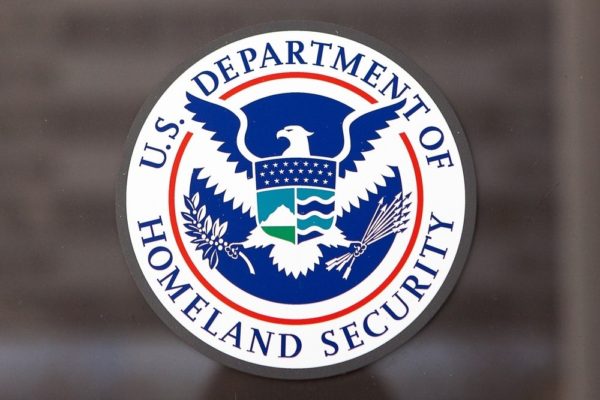
By: Jason Fry
 Since first implemented, the Work Opportunity Tax Credit program, or WOTC, has helped countless companies to benefit from significant tax incentives when they hire individuals from groups that typically face barriers to finding employment. The result is that companies that hire WOTC-eligible employees can earn an income tax credit of up to $2,400 per hire for most target groups and up to $9,600 for some select categories. Not only can employers save money in their hiring costs, but they can also help out the larger community by connecting qualified veterans, individuals on government assistance programs and others who historically find it difficult to land a job with meaningful employment.
Since first implemented, the Work Opportunity Tax Credit program, or WOTC, has helped countless companies to benefit from significant tax incentives when they hire individuals from groups that typically face barriers to finding employment. The result is that companies that hire WOTC-eligible employees can earn an income tax credit of up to $2,400 per hire for most target groups and up to $9,600 for some select categories. Not only can employers save money in their hiring costs, but they can also help out the larger community by connecting qualified veterans, individuals on government assistance programs and others who historically find it difficult to land a job with meaningful employment.
PATCH Act Expands and Extends WOTC
Although WOTC presents a win-win situation for all involved, the program is not a permanent fixture in the tax code. Instead, it expires periodically and goes into a hiatus period – until the program is reauthorized by Congress. The latest hiatus period lasted throughout 2015, and, given the uncertainty around when it would be reinstated, many employers opted against spending the time and resources to screen applicants who may be WOTC-eligible. But with the passage of the Protecting Americans from Tax Hikes (PATH) Act in late 2015, the program has been reinstated for another five years, including one retroactive year, giving employers the opportunity to reclaim WOTC tax credits for eligible hires made since January 1, 2015.
Introduction of a New Target Group
Additionally, the PATH Act introduced a new target group for qualified long-term unemployed individuals. Effective for individuals who began work for an employer after December 31, 2015, employers can also claim an income tax credit for new workers who qualify for this new group. The newly hired employee must have been unemployed for a period of 27 consecutive weeks and also received some type of state or federal unemployment compensation during that period.
New Opportunities to Capture Missed Credits
Due to the high level of uncertainty around the prolonged WOTC hiatus and resulting impact on employers’ hiring and tax planning strategies, the IRS has provided transition relief, which allows employers to forgo the 28-day filing deadline. In March, the IRS provided transition relief that would allow employers to submit forms to the State Workforce Agencies for new hires from January 1, 2015 through May 31, 2016 (and January 1, 2016 through May 31, 2016 for qualified long-term unemployed individuals). Through its recent guidance, the U.S. Department of Labor has extended the transition relief period, enabling employers to submit WOTC certification requests for any employee hired between January 1, 2015 through August 31, 2016 (and January 1, 2016 through August 31, 2016 for qualified long-term unemployed individuals), offering a three-month extension to the previous transition relief period. As a result, all companies, whether they have previously benefited from WOTC or are new to the program, have the chance to capture more than a year’s worth of tax credits. However, with the deadline of September 28, 2016 to submit all relevant forms, time is running out to take advantage of this unique opportunity.
So, what does the WOTC renewal and transitional relief mean for employers, and how can they manage compliance as they seek to recapture missed tax credits? Consider the following tips to help you gain maximum benefit from the WOTC program.
Identify eligible employees: To properly identify which employees are eligible, it is important to have an effective screening process in place to assess employee eligibility via paper forms, phone screenings or web screenings. Phone and web screenings can be particularly helpful for companies hiring employees at remote locations. The key is to screen everyone; though many employers might think they haven’t hired anyone who fits into one of the targeted group, that’s simply not the case. Based on Equifax Research Solutions’ own data, between 28 and 33 percent of all new hires across all industries are WOTC-eligible.
Verify eligibility: You’ll also need to verify that the employee is part of the WOTC-targeted group. This is done by filing IRS Form 8850, in which the employee selects which group they are part of. The employer then completes the form and submits to the appropriate State Workforce Agency. Along with Form 8850, employers must submit Form 9061 and other substantiating documentation to help certify an employee’s eligibility. A best practice to conducting this step effectively is to collect documentation from a third party to show that the individual does, in fact, qualify for the tax credit. Utilizing third-party documentation can help to eliminate the burden of collecting documentation from your hiring managers and new employees.
Track and report: The ability to track and report on both the progress and results of the WOTC program is essential to continually improving how the company screens its eligible employees and maintains compliance. Moreover, by tracking results, the company can validate the value of the program, highlight the cost savings of participating and continue to benefit from the program going forward.
Going Retro with WOTC
The re-authorization of the WOTC program and extended transitional relief presents employers with a unique chance to go back in time and recapture more than a year’s worth of missed tax credits. And with the introduction of the new category for long-term unemployed individuals, there are more opportunities than ever to benefit from the program. But with the deadline to file coming up soon, it’s important to understand how to take advantage of this program and achieve maximum tax savings.
 Jason Fry is a Senior Director at Equifax Workforce Solutions. Jason has more than 18 years of experience in pre-employment regulatory compliance with specific focus in employee screening and work eligibility verification. As a Senior Director he is responsible for guiding the strategic direction and financial performance of the state and federal tax credits and incentives services. Jason received his law degree from Georgia State University and is a member of the State Bar of Georgia.
Jason Fry is a Senior Director at Equifax Workforce Solutions. Jason has more than 18 years of experience in pre-employment regulatory compliance with specific focus in employee screening and work eligibility verification. As a Senior Director he is responsible for guiding the strategic direction and financial performance of the state and federal tax credits and incentives services. Jason received his law degree from Georgia State University and is a member of the State Bar of Georgia.


